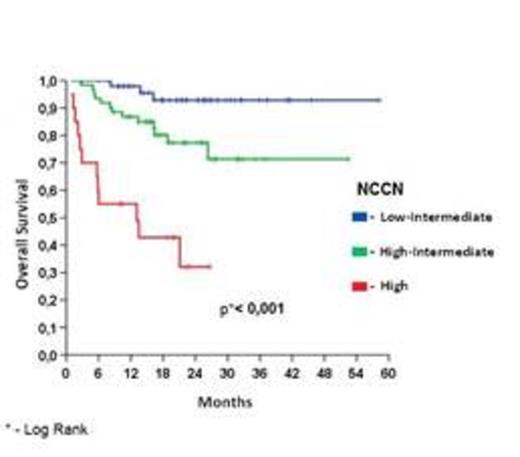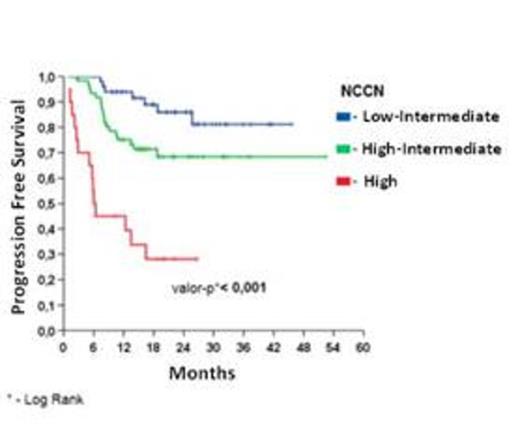Abstract
Introduction: To evaluate a new enhanced IPI proposed by the National Comprehensive Cancer Network (NCCN-IPI) in DLBCL patients, we compared the international prognostic index (IPI), R-IPI and NCCN-IPI in DLBCL patients treated with rituximab, cyclophosphamide, hidroxydaunorubicin, vincristine and prednisone (R-CHOP).
Methods: From June 2008 to November 2011 we retrospectively evaluated 146 DLBCL patients treated with R-CHOP-21 referred for cancer treatment in a single university institution in Brazil. Patient's clinical data were assessed to calculate the IPI, R-IPI and NCCN-IPI.
Results: Patient's median age was 58.9 years (range 16 – 86); 85 (57.8%) were female. According to IPI, risk categories were low (n=41, 28.1%), low-intermediate (n=43, 29.5%), high-intermediate (n=37, 25.3%) and high (n=25, 17.1%). Using R-IPI, risk categories were very good (n=19, 13%), good (n=65, 44.5%) and poor (n=62, 42.5%). According to NCCN-IPI, risk categories were low (n=12, 8.2%), low-intermediate (n=52, 35.6%), high-intermediate (n=62, 42.5%) and high (n=20, 13.7%). At 30 months (median follow up 17.7 months - range 0.6-58.2 months) the overall survival (OS) was 75.5%. The progression-free survival (PFS) at a median follow-up of 16.3 months (range 0.6-52.4) was 68.3% for all patients. Using IPI, the OS at 30 months did not differ between low and low-intermediate risk patients (96.8% vs. 82.2%; p=0.136); however, it was higher than the OS of high-intermediate risk (n=37; 96.8% vs 74.1% p=0.11) and high-risk (n=25; 96.8% vs 41% p < 0.001) patients (Figure 1). The NCCN-IPI demonstrated significant differences in OS (p < 0,001) and PFS (p<0.001) among low-intermediate, high-intermediate, and high risk groups, with the high-risk group exhibiting worse OS (32.1% in 30 months) (Figure 2). According to IPI, the OS in high-risk patients was 41%.
Conclusion: In our study the NCCN-IPI, but not the IPI or R-IPI was able to discriminate a high-risk group of DLBCL patients treated with R-CHOP with worse OS.
No relevant conflicts of interest to declare.
Author notes
Asterisk with author names denotes non-ASH members.




This feature is available to Subscribers Only
Sign In or Create an Account Close Modal